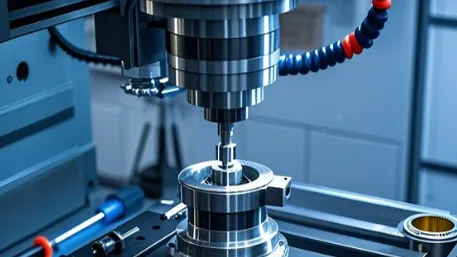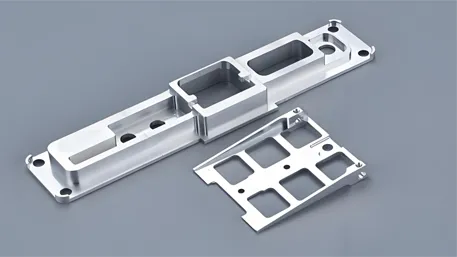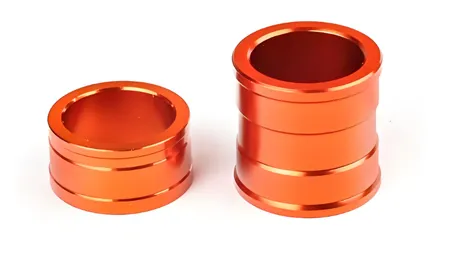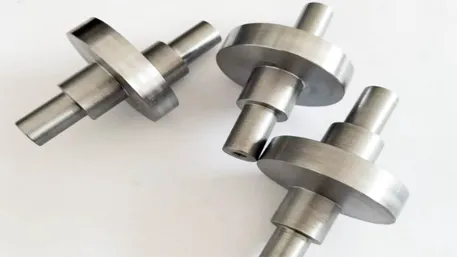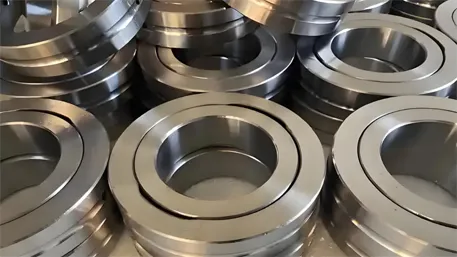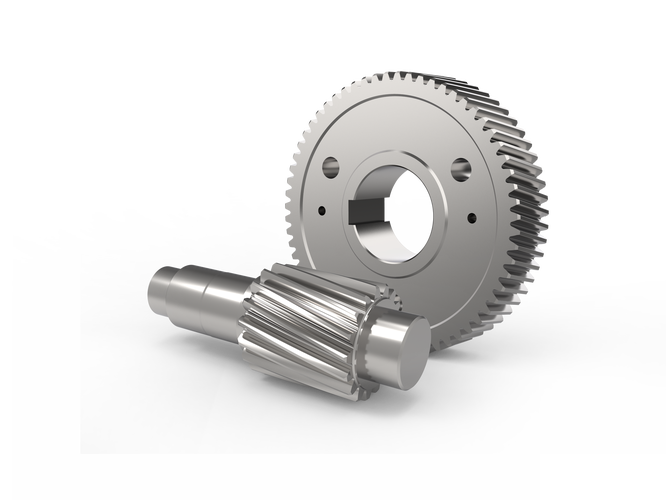In the process of modern agricultural mechanization, the performance of agricultural machinery equipment parts directly affects the operation efficiency, energy consumption, and equipment lifespan. Facing the complex farmland environment (high humidity, dust, chemical corrosion, etc.), traditional parts can hardly meet the requirements of modern agriculture for high precision and high reliability. CNC (Computer Numerical Control) technology, with its excellent precision machining capabilities and material adaptability, has become the core technical support for customizing agricultural machinery parts. This article will systematically analyze the technical logic and engineering value of custom CNC agricultural machinery parts from dimensions such as technical principles, materials engineering, process optimization, quality control, and industry applications.

I. Core Advantages of CNC Technology in Customizing Agricultural Machinery Parts
CNC technology provides three core technical supports for the processing of agricultural machinery parts through digital control and servo – drive systems:
1. Micron – level Precision Assurance
The positioning accuracy of CNC machine tools can reach ±0.001mm, the repeat positioning accuracy is ±0.005mm, and the surface roughness Ra≤0.8μm. For example, when processing the gears of a seeder, the tooth profile error can be controlled within ±10μm, ensuring the low – noise and high – reliability of the transmission system and improving the seeding uniformity.
2. Full – dimensional Machining Ability for Complex Structures
Five – axis linkage CNC equipment can achieve the processing of spatial curved surfaces, thin – wall structures (wall thickness ≤ 0.5mm), and irregular holes that are difficult to complete with traditional processes. For example, the three – dimensional curved surface of a harvester blade can be processed in one – step through five – axis milling, with the edge accuracy reaching ±0.02mm, improving the harvesting efficiency and crop damage control.
3. High Compatibility of Materials and Processes
CNC technology is compatible with high – strength alloy steels (such as 42CrMo), stainless steels (316L), aluminum alloys (6061), and wear – resistant composite materials. For the special working conditions of agricultural machinery, processing parameters can be optimized: when processing 42CrMo alloy steel, using TiAlN – coated tools in combination with high – pressure internal cooling technology can extend the tool life by 3 times; when processing aluminum – alloy components, through high – speed cutting (HSC) technology, the material removal rate can be increased by 40%, while reducing thermal deformation.
II. Materials Engineering and Selection Strategies for Custom Agricultural Machinery Parts
Material selection is a crucial link in customizing agricultural machinery parts and needs to be scientifically matched according to the farmland environment and mechanical functions:
1. Corrosion – resistance Design
For irrigation system parts, 316L stainless steel (PREN value ≥ 25) is selected, which can withstand the corrosion of fertilizer solutions and has a service life of more than 10 years.
For the granary parts of harvesters, aluminum alloy (6061 – T6) is used and anodized. It can pass a 500 – hour salt – spray test without rust, ensuring strength while achieving lightweight design.
2. Wear – resistance Optimization
For tractor crawler plates, 42CrMo alloy steel (tensile strength ≥ 1080MPa) is selected and quenched and tempered. The surface hardness reaches HRC45 – 50, and the wear – resistance is increased by 5 times.
For soil – tillage parts (such as plowshares), the surfacing welding of wear – resistant alloy process is used. The surface hardness is above HV500, and the service life is extended by 3 times.
3. Balance between Lightweight and Strength
For the bracket of the UAV spraying system, titanium alloy (TC4) is selected. While reducing the weight by 40%, it can maintain a tensile strength of ≥ 895MPa, improving the equipment’s endurance.
For the seeder frame, 6061 aluminum alloy (density 2.7g/cm³, tensile strength 290MPa) is used to reduce energy consumption while ensuring structural strength.
III. Innovation and Optimization of CNC Machining Processes
In response to the special needs of agricultural machinery parts, CNC machining processes achieve a double breakthrough in efficiency and quality through the following technological innovations:
1. Co – optimization of Tools and Paths
When processing high – strength alloy steel, CBN tools are used in combination with high – feed milling (HFC) technology. The cutting speed reaches 300m/min, and the material removal rate is increased by 60%.
For the wear – resistance requirements of parts in contact with the soil, laser cladding technology is applied to clad tungsten carbide coatings on the surface of the parts. The coating thickness is 0.3 – 0.5mm, and the hardness is above HV800.
2. Five – axis Linkage Composite Machining Technology
By clamping once, multi – surface processing can be completed. For example, for the complex splines and journals of the harvester drive shaft, the processing efficiency is increased by 70%, and the position accuracy reaches ±0.01mm, avoiding multiple – clamping errors.
3. Strengthening of Surface Treatment Processes
The seed – metering device parts of the seeder are electrolytically polished, with a surface roughness Ra≤0.4μm, reducing seed blockage and improving the seed – metering accuracy.
The tractor gears are nitrided, with a surface hardness above HV900, and the fatigue life is extended by 2 times.
IV. Quality Control System for Custom Agricultural Machinery Parts
To ensure that products meet the industry standards of agricultural machinery and the needs of field operations, custom CNC parts need to go through a strict quality control process:
1. Dimensional and Geometric Tolerance Detection
Using a coordinate measuring machine (CMM) for full – size scanning, the tolerance of key dimensions (such as the diameter of shaft – type parts) is controlled within ±0.005mm.
Geometric tolerance detection: roundness error ≤ 0.003mm, coaxiality ≤ 0.01mm, ensuring the assembly accuracy of parts.
2. Verification of Material and Mechanical Properties
Spectral analysis is used to confirm the material composition. For example, the chromium content of 42CrMo alloy steel should be ≥ 0.9 – 1.2%, and the molybdenum content should be ≥ 0.15 – 0.25%.
Tensile tests, impact tests, and hardness tests are carried out to ensure that the mechanical properties meet standards such as GB/T 3077. For example, the yield strength of 42CrMo should be ≥ 930MPa.
3. Environmental Adaptability Tests
Salt – spray tests are carried out to verify the corrosion – resistance performance. For example, 316L stainless – steel parts need to pass a 1000 – hour neutral salt – spray test without rust.
Wear tests are carried out to simulate field working conditions. For example, plowshare parts need to pass a 500 – hour soil – wear test, with a wear amount of ≤ 0.5mm.
V. Industry Application Practices of Custom CNC Agricultural Machinery Parts
1. Planting and Harvesting Machinery
Custom – made 42CrMo alloy – steel seeder gears have a tooth profile accuracy reaching ISO 6, increasing the transmission efficiency by 15% and reducing power loss.
Harvester blades are formed by five – axis CNC milling. The edge hardness is HRC55 – 58, increasing the harvesting efficiency by 20% and reducing crop losses.
2. Irrigation and Fertilization Systems
316L stainless – steel irrigation nozzles are precision – drilled by CNC. The hole – diameter tolerance is ±0.01mm, improving the spray uniformity by 30% and saving 15% of water.
The plunger pump parts of the fertilizer applicator are turned by CNC and surface – chrome – plated. The wear – resistance is increased by 4 times, and the service life reaches 8000 hours.
3. Tractors and Power Machinery
Custom – made TC4 titanium – alloy tractor suspension parts reduce the weight by 35% while maintaining strength, increasing the fuel efficiency by 8%.
The engine cylinder block is made of 6061 aluminum alloy by CNC casting and precision machining. The heat – dissipation efficiency is increased by 25%, extending the engine lifespan.
VI. Technological Trends and Industry Outlook
1. Upgrade of the Intelligent Processing System
The deep integration of AI algorithms and CNC systems can achieve real – time optimization of processing parameters. For example, by monitoring the cutting force and temperature through sensors and dynamically adjusting the feed rate, the processing efficiency can be increased by more than 25%.
2. Application of Digital Twin Technology
Virtual simulation platforms pre – rehearse the processing process, discovering process defects in advance, shortening the new product development cycle by 40% and reducing trial – and – error costs.
3. Innovation in Green Manufacturing Technologies
Dry cutting and minimum quantity lubrication (MQL) technologies reduce the use of coolants, and 100% of waste metal materials are recycled, promoting the low – carbon development of agricultural machinery parts manufacturing.
Inquire now and get a customized solution!
Whether it is the precision transmission parts of planting machinery, the wear – resistant blades of harvesting equipment, or the corrosion – resistant pipes of irrigation systems, our professional team will rely on the high – precision advantages of CNC technology, combined with materials engineering and process innovation, to provide you with a full – process customization service from design, processing to inspection. Click to leave a message, and let us, with a rigorous technical system and reliable quality assurance, customize high – performance and long – lifespan CNC part solutions for your agricultural machinery equipment, helping you improve efficiency, reduce costs, and achieve sustainable development in the field of modern agriculture!

